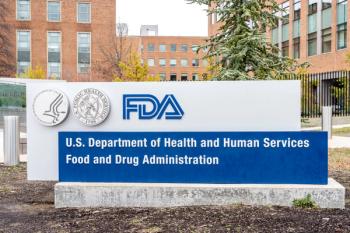
FDA Update Under the Obama Administration
New leadership and more resources aim to modernize FDA operations.
Instead of protecting the public from unsafe drugs and contaminated foods, the Food and Drug Administration is a “hazard to public health,” stated President Barack Obama in announcing his choices to head the agency and new efforts to improve food safety. Margaret Hamburg will be FDA’s new commissioner, and Joshua Sharfstein principal deputy commissioner for drugs and medical products.
Dr. Hamburg seems a good choice for getting through the daunting Senate confirmation process. She has experience turning around a low morale, underfunded public health agency as New York City’s public health commissioner in the 1990s. Before that, she did AIDS research at the National Institutes of Health and headed up the Department of Health and Human Services’ policy office during the Clinton administration. Recently she has led the Nuclear Threat Initiative’s effort to reduce the threat of biological weapons. Both industry and consumers applauded Hamburg as capable and experienced and not so inclined to toot her own horn. Their main hope is for early and speedy Senate confirmation.
As Baltimore’s health commissioner, pediatrician Sharfstein attracted national attention by launching a successful campaign in 2007 to halt prescribing of cough and cold medicines for very young children. A former aide to Rep. Henry Waxman (D-Calif), chairman of the House Energy & Commerce Committee, Sharfstein faced tougher confirmation prospects in the Senate due to industry concerns. He has opposed pharma marketing to doctors and medical students, promoted access to prescription drugs and backed FDA regulation of tobacco.
The administration’s emphasis on restoring FDA’s food oversight capabilities, yet separating it from drug regulation, walks a middle line between those who want to pull food out of FDA and into a new federal food safety agency, and those who prefer to keep FDA intact. But it remains to be seen if appointing two high-profile officials to share FDA leadership will really work.
More money
In addition to naming new officials, the White House pledged to further beef up funding for FDA food inspections and to modernize agency laboratories. This comes on the heels of providing FDA with a record $2.6 billion budget for fiscal year 2009, which was finally approved by Congress last month amidst cheers from the Alliance for a Stronger FDA and other agency advocates.
FDA receives $413 million in appropriated funds for drugs and $184 million for biologics this year; user fees add $500 million for a total of $1 billion for drug oversight. That specifically includes $41 million for the Office of Generic Drugs, $16 million to support the agency’s Critical Path Initiative, and $6.6 million to enhance the review of direct-to-consumer drug advertising.
Probably the biggest challenge for FDA’s new commissioner will be to make the case for continued increases in funding, which will require a clear sense of where the agency is headed and how it will get there.
Newsletter
Stay current in clinical research with Applied Clinical Trials, providing expert insights, regulatory updates, and practical strategies for successful clinical trial design and execution.


